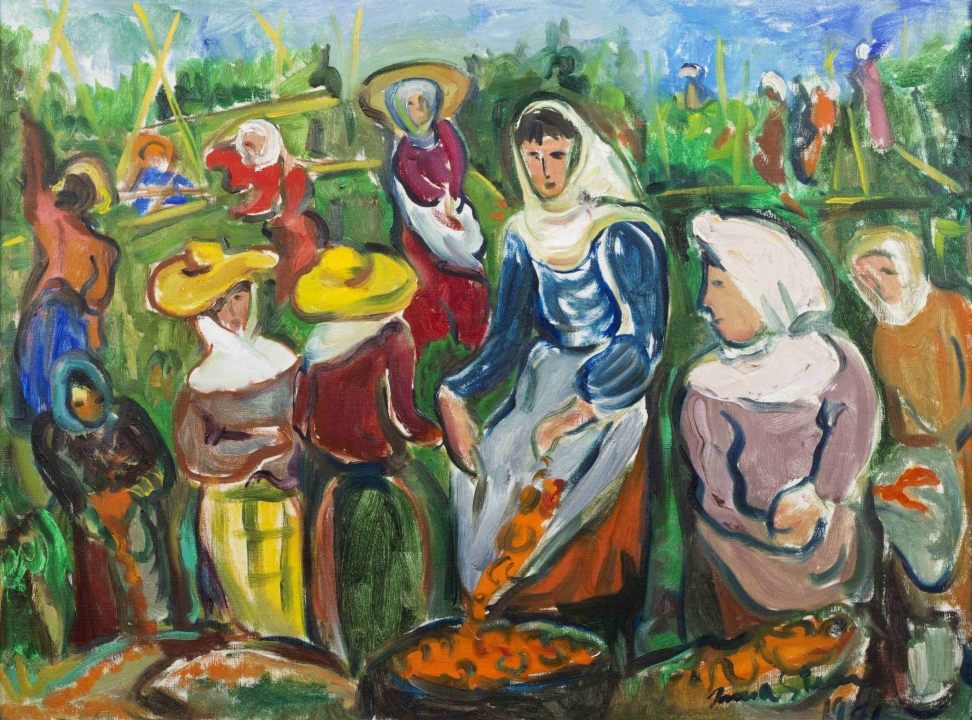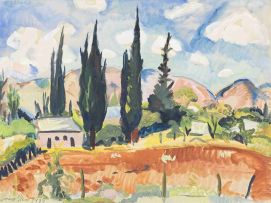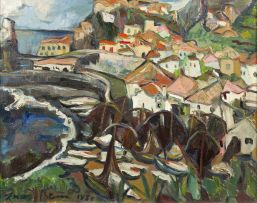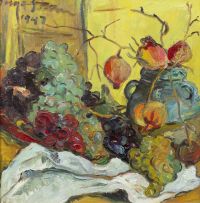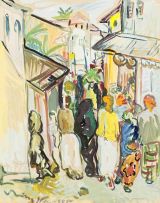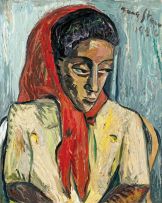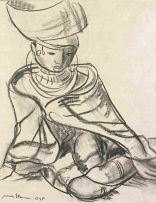South African Art, Jewellery and Decorative Arts
Live Auction, 8 October 2012
Session 3
About this Item
signed and dated 1961
Notes
Irma Stern produced a number of paintings of harvest scenes in the 1960s which Neville Dubow has described as "lyrical figures-in-landscape compositions, loosely knit yet held together by sweeping rhythms that bind earth, workers and sky".1 We know that she visited Europe in 1961 and painted in Spain. It's quite possible that Tomato Pickers was painted there as the harvesters wear the same loose-robed dresses and yellow sun hats as seen in Siesta, also painted in 1961.2
Mona Berman records that by February 1961 Stern and Dudley Welch were in Alicante, Spain, from where she wrote to Berman's mother, Freda Feldman, in the now celebrated correspondence made public through Berman's book. After complaining of illness, Stern writes:
I am apart from that hard at work. Am doing work that astonishes even me - the local press has lately discovered me and simply put articles out 'La Picasso' ... all through the Spanish press ...
She continues:
This place is very African in character. Palms grow - dates even get ripe - the sea is blue and the sun shines hard. We are having almond and peach trees in full flower and it is only 12th Feb ... We drive out all the days and I come back and paint in the studio.3
With quick strokes and vigorous brushwork Stern captures the energetic atmosphere of women at work. Animated by lively rhythms and bright primary colours, the painting becomes a celebration of the harvest, of the cycles of nature and fecundity and of the people who make this possible. Tomato Pickers can be compared both in terms of subject and treatment to Pimento Harvest painted in 1962 and now in the Permanent Collection of Iziko South African National Gallery.
1. Neville Dubow, Irma Stern, C. Struik Publishers, Cape Town, 1974, page 21.
2. Illustrated in Marion Arnold, Irma Stern: A Feast for the Eye, Fernwood Press, Cape Town, 1995, page 93.
3. Mona Berman, Remembering Irma, Irma Stern: a memoir with letters, Double Storey, Cape Town, 2003, pages 142-143.
